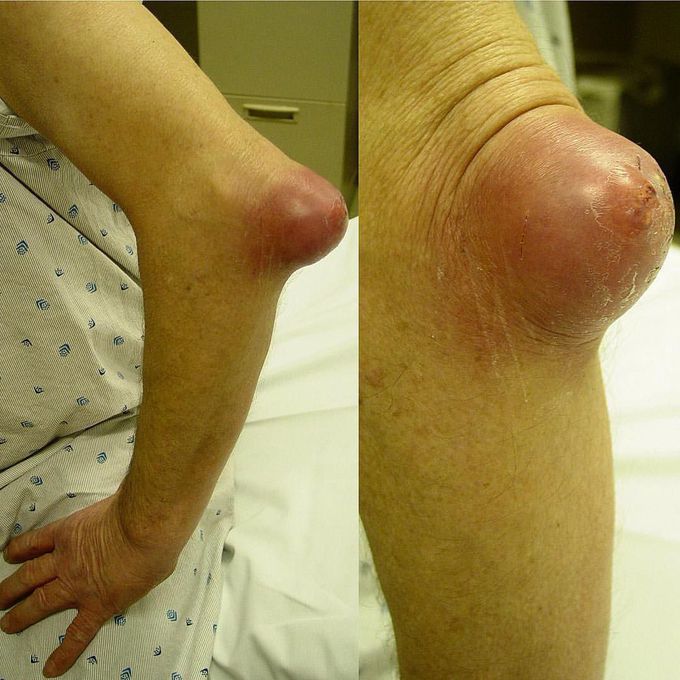


Enormous lump
This enormous lump is an acute infectious olecranon bursitis upon presentation to emergency department!! Bursae are generally fluid-filled sac-like structures located between mobile structures of the musculoskeletal system, between skin and bone, or between the joints. In normal conditions, small amounts of synovial fluid are produced within the bursa and reduce friction by lubrication. Bursitis is the result of inflammation that leads to increased fluid production from the synovial cells that line the bursa. Increased fluid production leads to increasing pressure of the bursa and in the result, increased pain. Trauma or puncture of skin at the site of a bursa can lead to the direct introduction of bacteria and subsequent inflammation and infection. This inflammation can be caused by prolonged pressure, overuse, inflammatory and crystalloid arthritis, and direct injury or trauma. Septic (or infectious) bursitis occurs when infection from either direct inoculation (usually superficial bursa) or hematogenous or direct spread from other sites (deep bursa involvement) causes inflammatory bursitis. On physical examination, patients have tenderness at the site of the inflamed bursa. If the bursa is superficial, physical examination findings are significant for localized tenderness, warmth, edema, and erythema of the skin. The treatment for septic bursitis is always antibiotic therapy, but In chronic or severe cases, incision and drainage or bursectomy may be warranted. Image courtesy of Christopher Kabrhel, MD.


